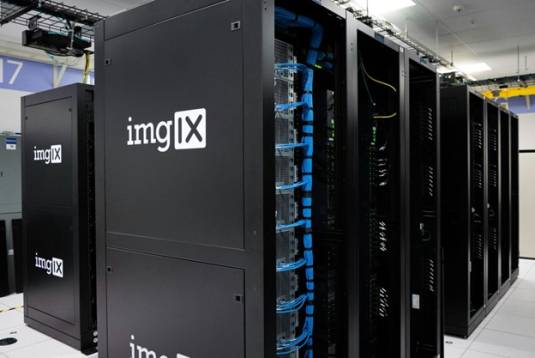Nowadays, data is everywhere. We are in the digital age where data is opening more doors than ever and helping close the gap between sales teams and consumers.
Its use is essential in business as it can provide much-needed information on productivity and profitability, as well as providing valuable insights needed for effective decision-making. Effective data management is therefore a necessity.
Data governance looks at how to manage data across all areas of the business, from its useability to its security and accuracy.

Information lifecycle management (ILM) is the process of overseeing data through its entire lifecycle. This means optimizing storage systems, whilst keeping costs down and ensuring the security and integrity of said data. This plays a huge role in achieving seamless data governance.
What Is Information Lifecycle Management?
One data governance definition is that it’s a comprehensive approach to managing the data assets within an organization throughout its lifecycle. But, whilst data governance sets policies around making data secure, accurate, and available, ILM uses these guidelines to implement specific technology, tools, and processes for managing information throughout its lifecycle.
A good ILM strategy can also highlight a company’s approach to risk management. It’s a complete and comprehensive, policy-based approach to managing data right from its inception to the point it’s deleted and everything in between. There are five main stages information must go through during its lifespan and these should be covered by ILM.
- Creation — Includes identifying all sources of information and setting a standard for collecting information of a certain standard.
- Storage — Means planning where and how to store information, the backup procedure (the cloud for example), as well as the maintenance and security. This will usually include data protection and encryption.
- Processing — Involves looking at how the information will be used, including how it will be received, organized, and evaluated.
- Distribution — For information to be useful, it must get to the right people at the right time, so understanding and planning how to share it securely is vital.
- Disposition — When information reaches the end of its life, companies will need to decide whether to retain (archive) or delete it. There will be legal and regulatory restrictions on how to do this depending on the region so it’s important to gain an understanding of these to avoid fines. This may even include wiping the hard drives of any hardware used.
Each of these phases plays a crucial role in the effective management of information. They help companies reduce risks to security and compliance. They also help companies avoid any legal breaches, lower costs, and help business leaders make more informed decisions.
Take a contract lifecycle for example.
Having a strategy for managing information at the end of the life cycle is also important. Poor disposal of data can put sensitive information at risk of theft or misuse.

What Are the Benefits of Information Lifecycle Management?
While determining the Value of Enterprise Architecture and change management, data governance plays a key role. High-quality data can help businesses build on a much stronger foundation when putting together the blueprint for structure.
ILM plays a key role in smooth data governance because it is a policy approach driven by the need to put information use, quality, and security first. Some of the key benefits of ILM are:
#1 Cost Reduction & Increased Productivity
ILM can reduce costs associated with data storage because an effective ILM solution will seek to eliminate data duplicates and data debris. This means searches will be quicker, enabling staff to be more efficient too. For example, HR teams will be able to access digital contracts quickly and this will be the case through the entire contract lifecycle.
#2 Improved Customer Service
Businesses that can handle customer queries quickly and efficiently can build better relationships with their clients. Having instant access to reliable data means customer service representatives can demonstrate knowledge and understanding of their clients in a way that feels more personalized.
Because Emails form part of the information lifecycle, ILM can help ensure safer communication with clients by utilizing cloud email security.
#3 Risk Reduction
Because ILM helps minimize the quantities of irrelevant information, it can be stored more efficiently and users will know where to locate relevant data. This minimizes the risk of data loss, leakages, or even the discovery of unfavorable content.
When considering Enterprise Architecture ROI, risk management can link into it quite nicely since EA models can also shed light on how data is created, used, and stored. These insights can help improve the security of critical data.

How Does Information Lifecycle Management Work?
We’re all familiar with looking after our tangible assets such as office security systems, but data governance takes more thought. This is where ILM comes in.
In short, information lifecycle management takes a consistent, centralized approach to handling the entire data lifecycle. It can also facilitate automation and storage tiering, which means data can be automatically migrated from one tier to another.
This means data that needs to be accessed more often, such as newer data, can be stored on faster, more expensive storage media whilst less important information can be stored on slower and cheaper media.
With the ILM approach different, policies for different types of data can be created by IT teams. Data declines in value at different rates, with some types of data keeping its value much longer than other types and ILM can consider this.
How Does Information Lifecycle Management Lead to Seamless Data Governance?
ILM helps businesses achieve enhanced data governance in a range of ways, which we’ll consider below.
#1 Categorizing Data
Organizing data assets into categories helps to identify any business-critical data using inventory tools. This streamlines the implementation of data governance policies and is part of establishing ownership. Data can then be governed effectively. This enables the discovery of new insights and opportunities for creating business value.
#2 Automation of Data Compliance
Automating data compliance can be achieved by implementing data lifecycle management tools that check that your data complies with governance and regulatory standards. This means continuous monitoring of your systems for any vulnerabilities, flagging up more issues than any manual checks could, and reducing the risks.

#3 Data Audit
ILMs provide data audit trails, which help data governance keep track of data origin, data movement, and any data transformations throughout its lifecycle. This data lineage gives organizations clarity on how data has been created, processed, and used. This gives transparency and ensures accountability.
#4 Data Quality
ILM tools can also monitor data quality metrics. If any data quality issues arise such as incompleteness, or inaccuracies, it can trigger alerts so corrections can be made quickly. This helps data quality meet the standards set out in data governance policy.
#5 Data Disposal or Archiving
The archiving or disposal of data can be automated using ILM systems in line with data governance policies. This ensures the security of data isn’t compromised as well as making sure it’s done in a compliant manner.
#6 Cyber Incident Response
While data governance sets out a detailed response plan to cyber breaches, ILM helps ensure data is protected from exposure to cybercrime. Poorly managed data can lead to cybercrime breaches and cost your business a lot of money. A cyber tabletop exercise can help organizations test systems to make sure everything is working as it should be.
Final Thoughts
Information lifecycle management isn’t just important in achieving seamless data governance, the two become intertwined in an effective strategy. When used together, you can guarantee a high standard of data management throughout its lifecycle. This is because ILM actions are the policies and principles of data governance.
Because both are thorough ways of ensuring a high standard of data management through the entire data lifecycle, using them together and aligning key objectives, organizations can achieve data excellence, enabling them to make better decisions and propel the business forward.
